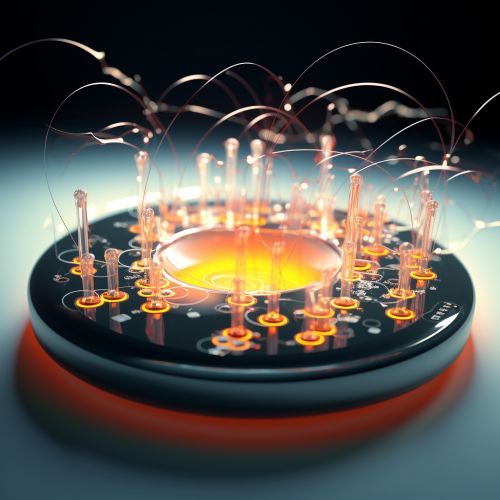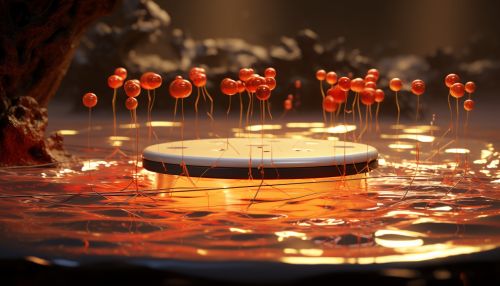Bioelectrochemical system
Introduction
A Bioelectrochemical system is a system that combines biological and electrochemical processes to achieve various functionalities, such as energy production, waste treatment, and chemical synthesis. These systems leverage the ability of certain microorganisms, known as exoelectrogens, to transfer electrons to external electrodes. This electron transfer process can be harnessed to generate electrical power or to drive the synthesis of valuable chemicals.


Bioelectrochemical Processes
The core of a bioelectrochemical system is the bioelectrochemical process, which involves the transfer of electrons between a biological entity and an electrode. This process can occur in either direction, depending on the specific system and its operational conditions.
In a microbial fuel cell (MFC), for example, the bioelectrochemical process involves the transfer of electrons from the microorganisms to the anode. These electrons then flow through an external circuit to the cathode, generating an electric current. On the other hand, in a microbial electrolysis cell (MEC), the process is reversed: electrons are supplied to the microorganisms at the cathode, driving the reduction of a specific compound.
Exoelectrogens
Exoelectrogens are a key component of bioelectrochemical systems. These are microorganisms that have the ability to transfer electrons to external electrodes. This ability is due to the presence of certain proteins in their cell membranes, which can act as electron transport chains. These proteins facilitate the movement of electrons from the inside of the cell to the outside, where they can be captured by the electrode.
The most well-known exoelectrogen is probably Geobacter sulfurreducens, a bacterium that was discovered in the Potomac River in the United States. However, many other exoelectrogens have been identified, including species of Shewanella, Rhodoferax, and Desulfuromonas.
Applications of Bioelectrochemical Systems
Bioelectrochemical systems have a wide range of potential applications. One of the most promising is in the field of energy production. For example, microbial fuel cells can be used to generate electricity from organic waste, such as sewage or agricultural waste. This not only provides a source of renewable energy, but also helps to reduce the environmental impact of waste disposal.
Another potential application is in the field of waste treatment. Bioelectrochemical systems can be used to remove pollutants from wastewater, including organic compounds, heavy metals, and nutrients such as nitrogen and phosphorus. This process not only cleans the water, but also recovers valuable resources that can be reused.
Bioelectrochemical systems can also be used for the synthesis of valuable chemicals. For example, microbial electrolysis cells can be used to produce hydrogen gas from organic waste. This hydrogen can then be used as a clean fuel or as a raw material in various industrial processes.
Challenges and Future Directions
Despite the many potential applications of bioelectrochemical systems, there are still many challenges to be overcome. One of the main challenges is improving the efficiency of the systems. This includes increasing the rate of electron transfer, optimizing the design of the electrodes, and improving the performance of the microorganisms.
Another challenge is scaling up the systems for industrial use. While laboratory-scale systems have shown promising results, it is still unclear how these results will translate to larger scales. This will require further research and development, as well as collaboration between scientists, engineers, and industry.
Despite these challenges, the future of bioelectrochemical systems looks promising. With continued research and development, these systems could play a key role in addressing some of the world's most pressing environmental challenges, including energy production, waste treatment, and chemical synthesis.
